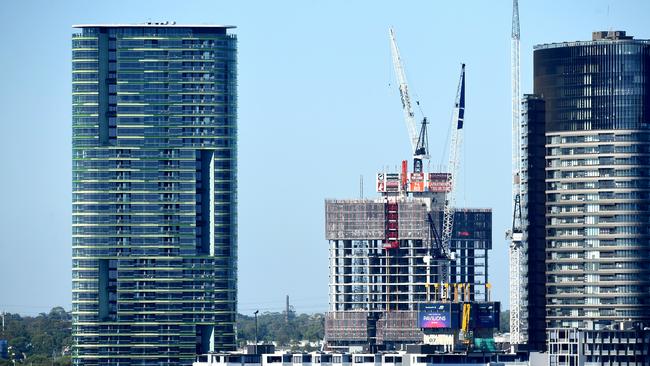
But in that boom there was one substantial group of residential property owners who missed out — owners of small inner-city apartments in Sydney, Melbourne and to some extent Brisbane experienced virtually no capital appreciation.
And those who invested in these properties for rental income received little or no rent increases. Indeed, significant areas of Melbourne city apartments have seen sharp falls in rental income, usually accompanied by lower capital values. I emphasise that large luxury apartments and the better apartments in suburban areas have usually performed well.
Many who correctly predicted a sharp rise in residential property values on the back of lower interest rates and strong demand purchased small apartments in areas such as Sydney’s Alexandria and Mascot and Melbourne’s Southbank and Docklands.
They are very disappointed at missing out on the boom.
There are now encouraging signs that this section of the apartment market is on an upward path, but they are a long way behind.
There is a complex set of forces that have combined to cause this anomaly. State governments, particularly NSW, have played a role, but the biggest factors were outside government.
In the housing boom, banks were far more willing to lend large sums to those wanting to buy small cottages than those buying a small apartment.
In a boom, buyers often spend whatever banks will lend, so this directed the buying towards outer-suburban cottages rather than inner-city apartments.
While buyers of inner-city small apartments were widespread, in Sydney and Melbourne the biggest single set of buyers were local and Hong Kong Chinese often purchasing for those residing in mainland China. The Chinese clamps on money leaving the country and later the Hong Kong clamps curbed this buying force.
Many apartments were funded by overseas Chinese to provide a residence for their children studying at Melbourne and Sydney universities.
In the last two years the absence of overseas students from universities slashed both this buying and student rental demand.
Particularly in Melbourne, many of the apartments bought by Chinese for their children remain empty as a considered strategy by owners. In Sydney the largest developer, Meriton, mobilised apartments in the Airbnb market and for Covid quarantine, so the number of empty apartments is much less than Melbourne.
But the apartment market change extends beyond the education sector. Many migrants started their Australian life renting inner-city apartments because they were close to jobs. A big portion of those migrants have prospered and, given the abundant low-interest bank credit, decided to buy cottages in outer suburbs.
Migrants who came three, four and five years ago have dominated the rush to buy house and land packages in the new estates around Australia.
At the same time, many older couples looking to downsize and sell their existing house did not want to move into smaller inner-city apartments. If they bought an apartment it was usually larger than most inner-city apartments.
The building of smaller apartments has understandably slowed, and so if we experience a rise in student and/or migrant intake there will be a shortage of the inner-city apartments, which will push up prices and rents.
Nevertheless in Melbourne a surprising number of blocks marketing smaller inner-city apartments are still being built, possibly reflecting off-the-plan contracts entered into years ago. All involved will be hoping migrants and students return.
However, most new apartment developments recognise the market has changed and are concentrated on larger units to tap the family market.
Any new developments will be affected by the higher building costs and will require increased prices to be economic.
The cost of building apartments in Melbourne is higher than in Sydney, but the Sydney apartment costs are boosted by higher land costs and the fact that the government demands underground carparking, requiring substantial and costly excavation.
Melbourne allows the lower floors for parking. The NSW government also wants to restrict available carparking in new developments so that not all apartments have a car park. This substantially reduces the market value of new apartments that do not carry a parking entitlement. The NSW bureaucracy has its own set of motivations, but acts as though it wants to join with the banks and push development into the outer suburbs.
All states have legislation that gives tenants extensive rights. Melbourne has gone further than most other capitals, which means that being a landlord becomes a much higher risk, so the availability of rental accommodation is declining.
The government is working to increase migration and the universities are trying to restore overseas student numbers. If they are successful, the real estate market, particularly in Sydney, is not ready for them.




In the last five years Australia has experienced a residential property price boom with few parallels in history. In some areas dwellings have more than doubled in price, but increases of 30-60 per cent are prevalent.